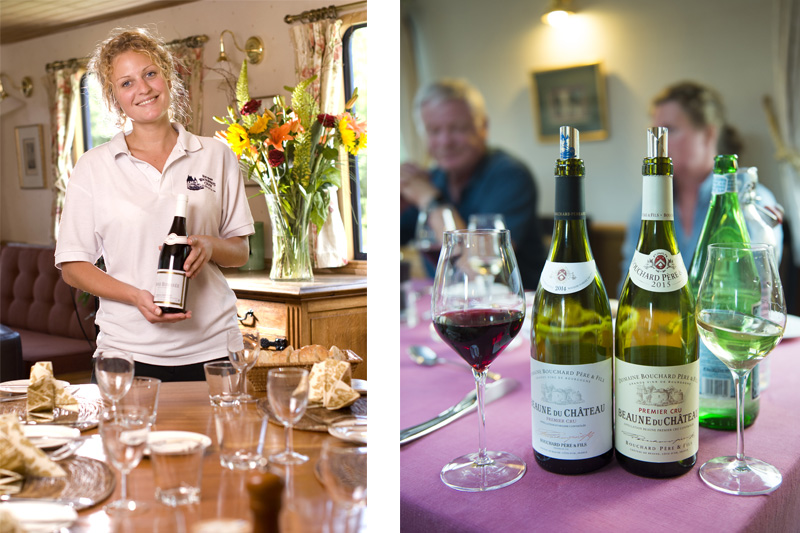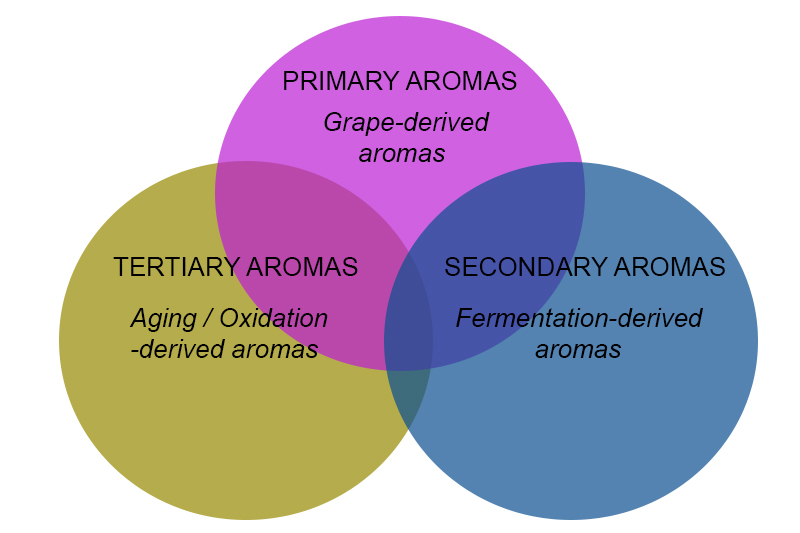Our wine experts have put together the ultimate guide to wine tasting – a highlight on many of our cruises.
An Insider's Guide to Wine Tasting

Getting to Know your Wines
Wines differ from each other in colour, texture, strength, ‘body’, smell and taste. When tasting wine, these should all be taken into account.
Did you know, the ability to discern flavours is not located in the mouth? We smell tastes, rather than tasting them with our lips and tongues and palates. The taste buds in our mouths can only discern sour, sweet, bitter and salty. We sense flavour only as an aroma because flavour-sensitive nerve cells are at the top of the nose.

Taste Test
- Begin by looking at the wine – angle your glass over a white background and inspect the colour, intensity and hue at the rim of the glass.
- Then take the first ‘nose’, by inhaling deeply. The nose is the overall smell. Try to identify any distinctive fragrances in the wine. Then swirl the glass to oxidise the liquid with the air.
- Take another look, and then take the second nose. The term “aroma” refers to the simple grapey smell of young wine whereas the complex smell arising with maturity in a good wine is called the bouquet.
A wine that is complex has suggestions of many different scents, or even scents within scents. A wine that is aromatic also has plenty of aromas and flavours.
- Next, take a good mouthful and let it reach every part of the mouth. The finish, also known as the after taste or sensory impact after tasting, should be long. In a great wine the flavour remains after swallowing. Use the chart to identify particular flavours.

Describing your Wine
Grapes contain thousands of chemical compounds. To describe wine, many words are borrowed from fruits and other plants that have traces of some of the same chemical constituents.
The body of a wine is the ‘volume’ of the wine, chiefly due to alcoholic strength. Wines are often referred to as being medium-bodied or full-bodied. Other adjectives used for full-bodied wines are heady (attractively high in alcohol), heavy (full-bodied and alcoholic), meaty (richly flavoured, full-bodied), and robust (full-bodied, sturdy).
A relatively high alcoholic wine has legs, i.e. the colourless streams left on the inside of a glass after a wine has been swirled. Young white wines are often acidic. If they have too much acid, they are called green. If they are attractively acidic, they are called fresh. A steely wine is firm, with a sinewy character and high acidity.

Key Words
Young red wines are often tannic.
Tannin – a red wine preservative that comes from the grape skins and stems. It is a dry, mouth-coating substance. A tannic wine, also called ‘hard’, will be astringent and mouth-puckering.
‘Firm’ – may also be used to describe a young wine with a decidedly astringent style and perceptible tannins.
‘Supple’ – the opposite of hard. It describes a wine that is round and smooth, and not too tannic.
‘Soft’ – another adjective for a wine that does not have too much tannin and has mellow flavours.
‘Aggressive’ – wine that has not mellowed as it should.
Wines are classified as sweet or dry, i.e. the opposite of sweet. A rich wine has some apparent sweetness as well as depth and breadth of colour. A clean wine is refreshing.
A balanced wine has all the dimensions — acidity, sweetness, tannins and alcohol — in a harmonious whole. A big wine is strong, round and satisfying.
A wine with the ultimate combination of breed, body and maturity is called ‘noble’.

What to Look Out For
Primary aromas come from the type of the grape or the environment in which it grows. For instance, Cabernet Sauvignon wines will often exhibit subtle nuances of blackcurrant, mint or violet. There is quite a range of flavours in the Primary Aroma group, including fruit and herbal flavours, earthiness, floral notes and spices.
Secondary flavours come from the fermentation process, which introduces yeast and other microbes. A great example of this is the sour smell that you can find in Brut Champagne that is sometimes described as “bready” or “yeasty.” These fermentation-related aromas are present in all wines to some level and young wines tend to have more intense Secondary Aromas than wines that have been aged.
Tertiary aromas (classically referred to as “bouquets”) come from aging wine. Aging aromas come from oxidation and resting the wine in oak or bottles for an extended period of time such as the vanilla aroma associated with oak-aging. Other, more subtle, examples of tertiary aromas are nutty flavours, like the hazelnut found in vintage Champagne or the dried fruit aromas, such as fig, that are associated with older red wines.

Inspired?
All our cruises feature an onboard Wine Expert who will hand-pick a selection of wines to complement each meal. As well as our onboard selection, many itineraries visit a number of wineries or domanies for a deeper insight into wine tasting. Visit our website to view our full collection.
Our selection of Wine Appreciation Cruises can be enjoyed in France & Italy. Sample some of Europe’s finest wines and visit beautiful, boutique vineyards that have been around for centuries.
 English
English
 Spanish
Spanish French
French German
German Norwegian
Norwegian Portuguese
Portuguese Swedish
Swedish Italian
Italian Russian
Russian Simplified Chinese
Simplified Chinese Japanese
Japanese